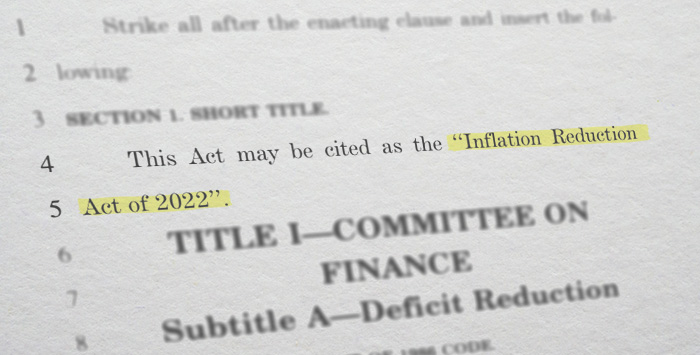If you’ve received notification that you’re losing Medicaid eligibility, you’re certainly not alone. Millions of Americans will get similar notices in 2023 and 2024, now that states are once again disenrolling people from Medicaid after not doing so between March 2020 and March 2023.
(If you need help to understand why you lost Medicaid, how to avoid loss of coverage or appeal lost coverage, please visit our article explaining Medicaid redeterminations.)
But that doesn’t make it any easier to find out your health coverage is ending. You’re still left with a big question: What to do now that you’ve been declared ineligible for Medicaid and dropped from the program? Let’s take a look.
Can I reapply for Medicaid after my coverage is terminated?
Yes. Enrollment is open year-round, which means you can reapply for Medicaid anytime. So if your circumstances change and you think you once again meet the eligibility criteria (perhaps you experienced a pay cut or job loss), file a new application.
If you ended up losing Medicaid eligibility because you didn’t complete the renewal process, you have a 90-day window when you can get your coverage reinstated if you complete the renewal and are determined eligible.
What are my coverage options if I’m losing Medicaid?
If you’re losing Medicaid eligibility and are employed, you’ll be able to enroll in an employer’s health plan, if you are employed and one is available, or a plan offered through the Marketplace/exchange in your state. Here’s what you need to know about these coverage options:
- If you have access to an employer’s plan that’s considered comprehensive and affordable, that may be your best option. (Access to an employer’s plan will vary from one employer to another. Some offer coverage only to full-time workers, while others also offer coverage to part-time employees.) Take the necessary steps to enroll in that plan as soon as you receive notice that your Medicaid is ending. The special enrollment period will continue for 60 days after your Medicaid ends, but it’s best to sign up before the date your Medicaid ends, so that you avoid a gap in coverage.
- If you do not have access to a comprehensive, affordable plan from an employer, you can enroll in a plan through the Marketplace/exchange. Most people qualify for income-based subsidies to offset the cost. (To be clear, Marketplace coverage is an option for nearly anyone, but financial subsidies are only available if you don’t have access to an affordable, comprehensive plan offered by an employer.) Your special enrollment period will continue for at least 60 days after your Medicaid ends (or until July 2024 in many states), but in most states you’ll need to enroll before your Medicaid ends in order to avoid a gap in coverage.
If you became eligible for Medicare during the pandemic but didn’t enroll because your Medicaid didn’t end due to the continuous coverage rule, you’ll have a six-month window when you can transition to Medicare without a late-enrollment penalty. Here’s more about transitioning from expanded Medicaid to Medicare.
What if I can’t afford health insurance and don’t qualify for Medicaid?
It’s important to understand that the rules have changed in recent years to make health coverage more affordable for more people. This includes larger and more widely available subsidies for Marketplace coverage, and a fix for the “family glitch” that makes some employees’ family members newly eligible for Marketplace subsidies.
So it’s very unusual for a person who isn’t eligible for Medicaid (or Medicare) to also be unable to find health insurance deemed affordable. But there are some exceptions, including very low-income adults in states that haven’t expanded Medicaid, as well as people who are ineligible to use the Marketplace because they’re not lawfully present in the U.S.
There are also various medical providers throughout the U.S. that can be used by people who don’t have health insurance, including federally qualified health centers, safety net hospitals, and free or sliding-scale clinics.
Does it matter what state I’m in?
To some extent, yes. If you’ve been notified you are ineligible for Medicaid, there are several things to keep in mind in terms of how coverage options vary from state to state:
- If you’re in one of the states that use HealthCare.gov as their Marketplace, you’ll have an extended special enrollment period, through July 2024, when you can sign up for a Marketplace plan. But the coverage will not be retroactive, so you’ll still need to enroll before your Medicaid ends if you want to avoid a gap in coverage.
- If you’re in California or Rhode Island, you may find that you’re automatically enrolled in a Marketplace health plan. (You’ll still have an option to decline the plan or pick a different plan.)
- If you’re in Pennsylvania or New Mexico, you may be able to avoid a gap in coverage even if you sign up for a Marketplace plan after your Medicaid ends. (In most states, you need to enroll in a new plan before your Medicaid termination date if you want to avoid a gap in coverage.)
- Some people in New Mexico and Rhode Island will find that their initial premiums for Marketplace coverage are paid by the state.
- If you’re in New York or Minnesota, you’ll likely qualify for Basic Health Program (BHP) coverage if your income doesn’t exceed 200% of the poverty level. And in Oregon, Medicaid expansion coverage has been temporarily extended to 200% of the poverty level for people who were already enrolled as of March 2023. This is intended to minimize coverage losses until Oregon’s BHP is up and running in mid-2024.
- If you’re in a state that hasn’t expanded Medicaid and your income is below the poverty level, you may find that you’re in the coverage gap and not eligible for any financial assistance with your health coverage. This could be the case for some people who have aged off of Medicaid for children, no longer have minor children, or who no longer qualify for Medicaid due to pregnancy. Depending on their circumstances, low-income people in states with a coverage gap can find that they’re denied Medicaid and also ineligible for premium subsidies in the Marketplace. You’ll want to read this article about avoiding the coverage gap.
- If you’re in Georgia, South Dakota, or North Carolina, you may be able to re-enroll in Medicaid once Medicaid expansion takes effect. (In Georgia, eligibility will include a work requirement.)
The rules for transitioning from Medicaid to an employer-sponsored plan are the same in every state. If you’re transitioning from Medicaid to Medicare, the rules are generally the same nationwide, but there’s state-to-state variation in terms of Medigap access if you’re under 65 or eligible for Medicare due to a disability.
If I’m losing Medicaid eligibility, what happens to my child’s coverage?
Even if you’re no longer eligible for Medicaid, your child still may be eligible for Medicaid or the Children’s Health Insurance Program (CHIP). In every state, children can access these programs with higher household income levels than adults. So your ineligibility does not necessarily translate to your entire household.
If your kids are not eligible for CHIP, you may be able to secure coverage for them through an employer or the Marketplace under the same terms discussed above.
I’m not sure if I’ll lose my coverage. How do I check Medicaid eligibility?
The state will process your renewal when it’s due and definitively determine your eligibility. But if you want to get a rough idea of your eligibility ahead of time, this chart shows Medicaid and CHIP income limits (as a percentage of the poverty level) in each state for children, pregnant women, parents of minor children, and adults under age 65.
And this chart shows the dollar amounts that correspond to various percentages of the poverty level in 2023. Note that the amounts vary depending on how many people are in your household.
If you’re 65 or older, or eligible for Medicaid due to a disability or blindness, your eligibility in most states depends on both income and assets.
Louise Norris is an independent individual health insurance broker who has been writing about health insurance and health reform since 2006. She has written dozens of opinions and educational pieces about the Affordable Care Act for healthinsurance.org. Her state health exchange updates are regularly cited by media who cover health reform and by other health insurance experts.









